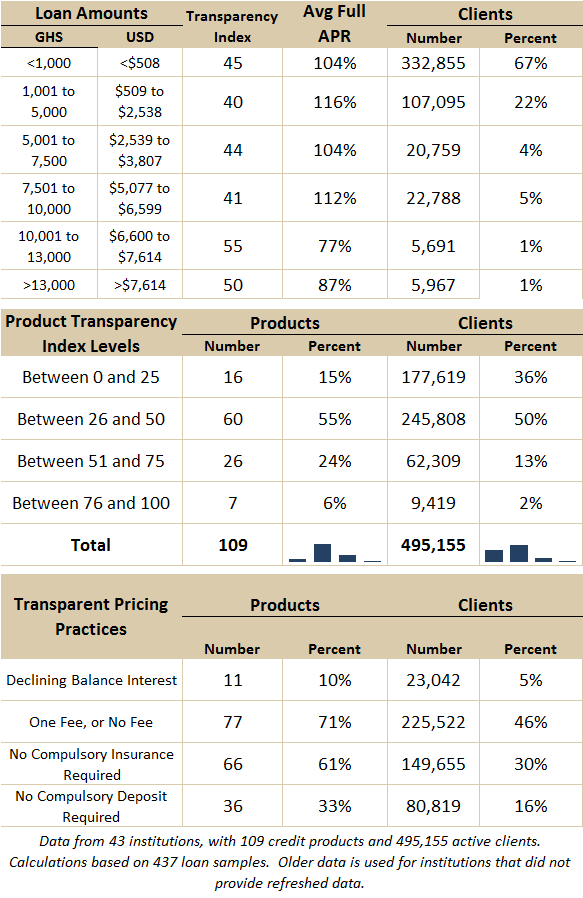Microfinance Pricing Report: Ghana
The Ghana Microfinance Pricing Report 2013 presents in-depth analysis of the prices paid by microfinance borrowers in Ghana. The report draws out key themes, features and trends in pricing, basing its analysis on prices calculated using original loan documentation representing real client loans in Ghana. The report covers the loan products accessed by 495,155 of Ghana’s borrowers, representing 87% of the total market.
This analytical report was prepared by MFTransparency in partnership with Planet Rating and with funding from MasterCard Foundation. Further data collected via the Transparent Pricing Initiative can be seen, downloaded and interacted with on the Ghana pages of MFTransparency’s Pricing Data Platform.

Executive Summary
- The institutional level Pricing Transparency Index ranges widely from 16 down to 99 in Ghana. Twenty-four products showed improvements in their Transparency Index between 2011 and 2013, while 18 products had less transparent prices.
- Only a small minority of borrowers benefit from loans priced transparently as 2% of them receive loans which Transparency Index is above 75/100.
- This low level of transparency is explained by pricing practices consisting of multiple price components: 95% of borrowers receive loans which incur interest calculated using a flat interest method; 95% of borrowers pay fees in addition to the interest rate; 70% of borrowers pay a compulsory insurance fee; and 84% must provide compulsory deposits. The few MFIs with a good Transparency Index use declining rates and a limited number of fees.
- Microfinance pricing data collected in Ghana shows that the true prices increase on smaller loans. As true prices rise, the interest rate communicated to the borrower becomes less indicative of the true price and therefore, the corresponding Transparency Index value decreases. Inversely, larger and longer term loans are priced more transparently.





No Comments